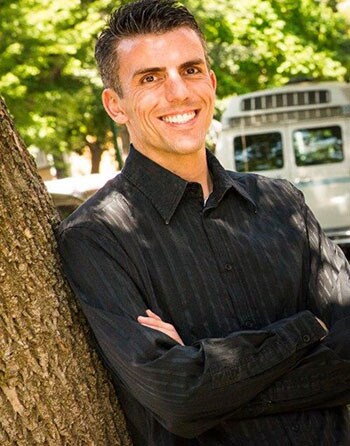Living with a Heart Defect

Congenital heart defects are present at birth and can affect the structure of a person’s heart and its ability to work properly. As medical care and treatment have advanced, people with heart defects are living longer and healthier lives, many into adulthood. Learn about heart defects and about Ken, an adult living with a heart defect. You can also learn what CDC is doing to improve the lives of people with heart defects.
What Are Heart Defects?
Heart defects are present at birth and can affect the structure of a person’s heart and its ability to work properly. They can also affect how blood flows through the heart to the rest of the body. Heart defects can vary from mild (such as a small hole in the heart) to severe (such as missing or poorly formed parts of the heart).
Some affected people might need one or more surgeries on the heart or blood vessels. It is important to note that even with these treatments, many people with heart defects are not cured, as heart defects are lifelong conditions. As a person with a heart defect grows and gets older, further heart problems may occur.
How Many Babies Are Born with Heart Defects?
Heart defects are the most common type of birth defect, affecting nearly 1% of births – or about 40,000 births – per year in the United States.1,2 It is estimated that more than two million people in the United States are living with heart defects.3
CDC Activities on Congenital Heart Defects Care across the Lifespan
As medical care and treatment have advanced, people with heart defects are living longer and healthier lives, many into adulthood. This remarkable progress presents new challenges to meet the special needs of this group of people. CDC is working to learn more about people living with heart defects and to identify strategies to improve their health.
- In 2015, CDC started a 4-year project to track people of all ages with heart defects. Five sites—University of Colorado-Denver, Duke University in North Carolina, Emory University in Georgia, the New York State Department of Health, and the University of Utah—are working to better understand the survival, healthcare use, and long-term health of people of all ages with heart defects.
- In 2016, CDC, in partnership with March of Dimes, the University of Arizona College of Medicine, and the Arkansas Center for Birth Defects Research and Prevention, launched the Congenital Heart Survey To Recognize Outcomes, Needs, and well-beinG (CH STRONG), a survey of adults with heart defects to assess their health, social and educational status, and quality of life.
These activities provide important insights to guide our continued efforts to prevent heart defects and support families affected by them.
More Information
References
- Hoffman JL, Kaplan S. The incidence of congenital heart disease. J Am Coll Cardiol. 2002;39(12):1890-1900.
- Reller MD, Strickland MJ, Riehle-Colarusso T, Mahle WT, Correa A. Prevalence of congenital heart defects in metropolitan Atlanta, 1998-2005. J Pediatr. 2008;153:807-13.
- Gilboa SM, Devine OJ, Kucik JE, et al. Congenital heart defects in the United States: Estimating the magnitude of the affected population in 2010. Circulation. 2016;134(2):101-9.






















.png)












No hay comentarios:
Publicar un comentario